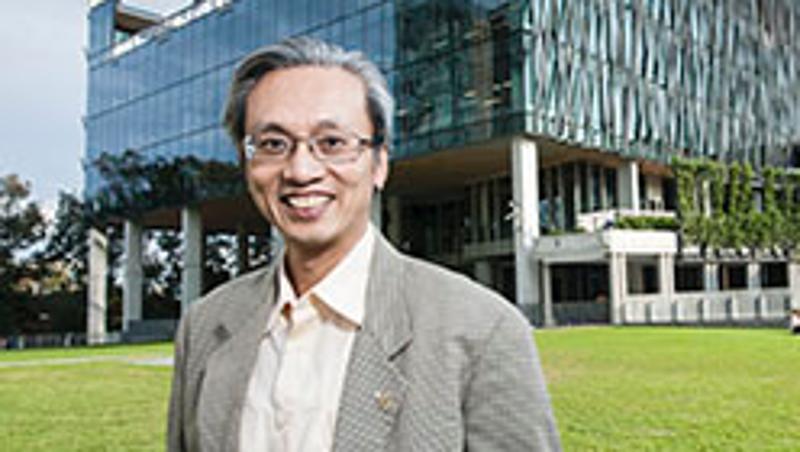
It's Australia's most advanced 'self-monitoring' building, with technology hidden right under the feet of QUT staff and students.
The country's newest and most advanced structural health monitoring (SHM) system is embedded in the Brisbane university's Science and Engineering Centre (P Block) and is already successfully detecting earthquakes.
Professor Tommy Chan from QUT's School of Civil Engineering and Built Environment said researchers were delighted when the building's sensor system picked up the two significant earthquakes that recently struck the Queensland coast off Fraser Island with magnitudes 5.3 and 5.4.
"The vibration sensors on the SEC building were successful in detecting these earthquakes - which were amongst Queensland's biggest quakes for 100 years - and have also detected other smaller earthquakes since the system was turned on in late 2013," he said.
The technology used in the building could lead to a reduction in traditional inspection costs for buildings and bridges, according to Professor Chan.
He has just received a $360,000 Australian Research Council grant to further his research into transforming traditional civil structures into smart structures that can accurately identify current and future structural deterioration conditions - and automatically notify the infrastructure management for timely maintenance.
"Not many Australian buildings have this kind of embedded structural health monitoring system because it is quite new here in Australia," Professor Chan said.
"Our system in the Science and Engineering Centre is the most recent and advanced monitoring system, particularly in terms of long-term and continuous structural monitoring."
The building is part of a small but elite group, with SHM technology also used on the Sydney Harbour Bridge and being considered for use on Melbourne's West Gate Bridge and Brisbane's Story Bridge.
P Block is a 10-storey concrete and glass building on Gardens Point campus that is equipped with vibration sensors across four of its six above-ground levels.
A single-span 8.5-metre concrete footbridge that leads into the north side of the building also has an embedded vibration sensor system.
Professor Chan said designing a cost-effective SHM system had been a priority for the researchers and the university, with the resulting system costing less than $200,000, including just $75,000 for the vibration monitoring system.
"When you consider the overall Science and Engineering Centre cost $230 million, the entire monitoring system is very good value at less than 0.1 per cent of the total project investment," he said.
Professor Chan said one of the budget-saving initiatives employed by the research team was the use of a software-based synchronisation method for the vibration sensing system, rather than a more expensive and complex hardware-based system.
Multiple nodes of sensors embedded throughout the building relay their information back to a base station via Ethernet cables.
In addition to the vibration sensors, the SHM system also includes a structural strain/stress monitoring system (mostly on level one) and a subsurface monitoring system at basement level.
The SEC building's structural health monitoring system started operating in October 2013, following several months of testing and the opening of the building to students at the start of 2013.
"We have a dedicated team for operating the vibration system and analysing data including myself, Professor David Thambiratnam, Dr Andy Nguyen (research fellow), Les King (Science and Engineering Faculty senior technician) and two PhD students," Professor Chan said.
"Some of our undergraduate students are also learning from the data collected.
"The system currently operates continually with data split in half hour segments and stored in a high performance computing server, providing seamless access for our researchers.
"We are planning to share data across Australia, particularly among other institutions, in a later phase of the project."
The technology will also be discussed at the International Conference on Structural Health Monitoring of Intelligent Infrastructure in Brisbane in 2017, which is being organised by QUT and the Australian Network of Structural Health Monitoring (ANSHM).
Media contact:
- Mechelle McMahon, QUT media officer, 07 3138 1150 or media@qut.edu.au
- After hours, Rose Trapnell, QUT media team leader, 0407 585 901


